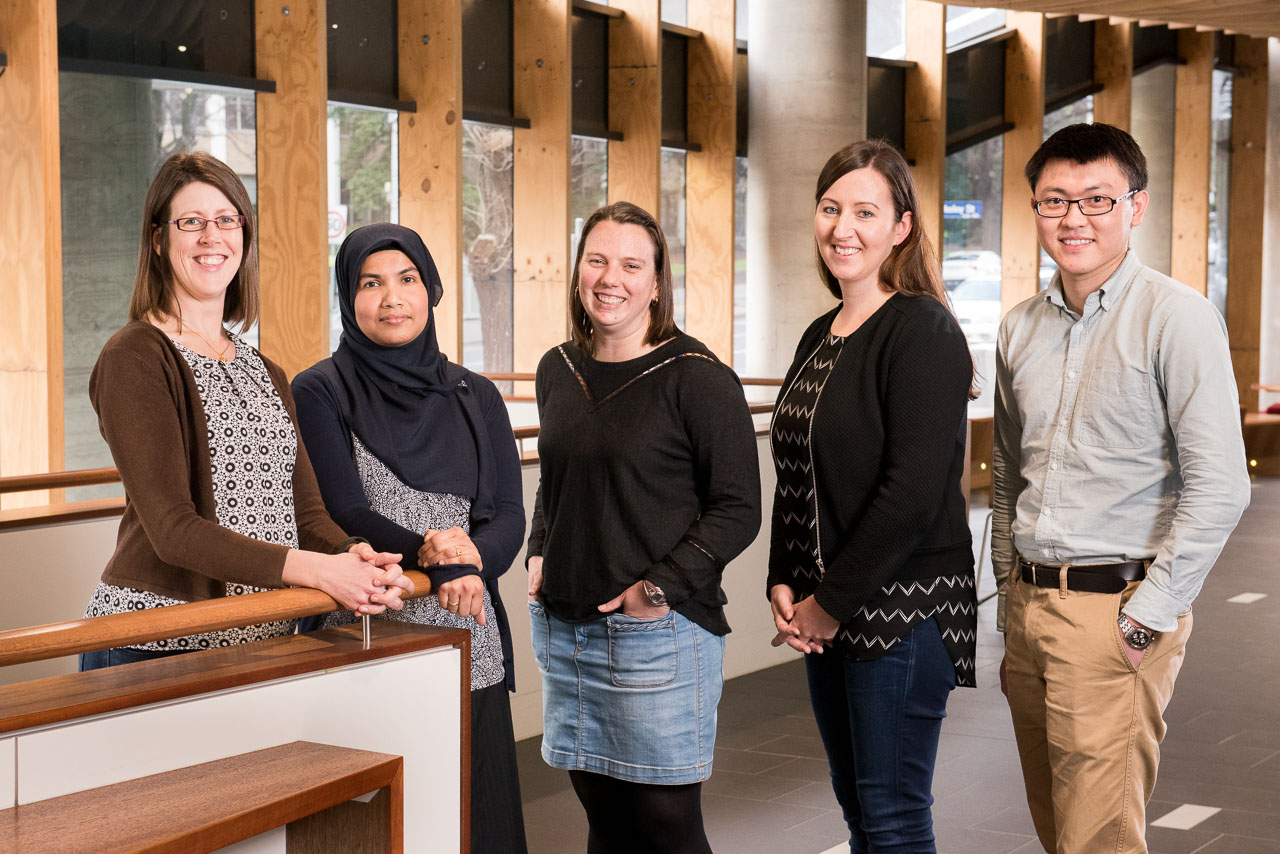-
Mapping the molecular epidemiology of HIV-1 infection in Australia
The HIV Characterisation laboratory is involved in an Australia-wide project aimed at investigating the application of molecular epidemiological tools to assist the understanding of HIV genetic diversity and transmission patterns through the analyses of HIV cohorts in NSW, Victoria, Western Australia, South Australia and Queensland. Understanding the ongoing changes in the genetic diversity of the HIV epidemic has important implications for transmission dynamics, diagnostics, antiretroviral drug resistance and disease progression. This unique clinical and public health initiative aims to improve clinical outcomes and monitor HIV transmission patterns to inform HIV prevention and management in Australia.
-
Epidemiological trends in HIV in Victoria among persons not reporting male-to-male sex
In Victoria, the HIV epidemic is largely dominated by transmission through networks of men who have sex with men (MSM). Accordingly, surveillance and guidelines for testing and prevention are largely focused on this population. In collaboration with the Burnet Institute, Doris’ group aims to characterise epidemiological trends in non-MSM HIV notifications in Victoria in order to better understand the needs of diverse populations who may be at increased risk of HIV acquisition and transmission.
-
Analysis of transmitted HIV drug resistance to the newest class of antiretrovirals
Baseline genotyping of the virus infecting an HIV-positive individual is part of standard-of-care treatment. It reveals that transmitted drug resistance (TDR), typically to protease and reverse transcriptase inhibitors, continues to be important for the management of HIV infection. The increasing use of integrase inhibitors raises concern that TDR to this class of antiretroviral drugs may also occur. Analysis of genotyping data from this cohort will provide insight into whether there has been transmission of virus resistant to this new class of antiretrovirals to newly infected individuals and also provide recommendations for management and treatment of people infected with HIV-1.
-
Temporal changes in the prevalence of HIV drug resistance mutations
The advent of highly active antiretroviral therapy (HAART) in the late 1980s has seen significant reduction in the morbidity and mortality rates of people living with HIV in Australia. The development of antiretroviral resistance and cross-resistance to more than one drug in a given drug class has made treatment management challenging. Using an antiretroviral drug resistance mutation database established at VIDRL since 2001, Doris’ group seeks to investigate the changes in HIV drug resistance mutation frequencies and determine if these changes coincide with changes in doctors’ drug prescribing habits over time.
-
Molecular Epidemiology of HTLV-I in the Northern Territory
Human T-cell lymphotropic virus type 1 (HTLV-1) infects approximately 10-20 million people worldwide, with clusters of high endemicity in certain geographic areas or ethnic groups, including central Australia. Seven subtypes have been described including the Australo-Melanesian subtype C (HTLV-1c). With limited sequence information available, Doris’ group seeks to investigate the molecular epidemiology of this virus in Australia. Phylogenetic analyses of LTR and envelope sequences confirm the clustering of the Australian subtype with HTLV-1c. When compared to sequences collected from a patient in 1988, there is very limited genetic variation, indicating that the virus has remained stable over time.

Dr Doris Chibo
(03) 9342 9625 | doris.chibo@mh.org.au
- Position:
- Senior Scientist, State Reference Laboratory for HIV Characterisation
- Theme(s):
- Viral Infectious Diseases, HIV
- Discipline(s):
- Public Health
- Unit(s):
- Victorian Infectious Diseases Reference Laboratory (VIDRL)
- Lab Group(s):
- Chibo Group
Dr Doris Chibo is the Senior Medical Scientist in the State Reference Laboratory for HIV Characterisation of the Victorian Infectious Diseases Reference Laboratory (VIDRL). An interest in the use of molecular techniques and phylogenetic analysis has seen her make contributions in the field of molecular epidemiology and evolution of viruses of public health importance, namely measles virus, HIV, herpes simplex virus and human coronaviruses. Her laboratory focuses on HIV with an interest in the molecular mechanisms associated with the development of resistance to antiretroviral drugs, as well as studying the diversity and transmission of these viruses.



